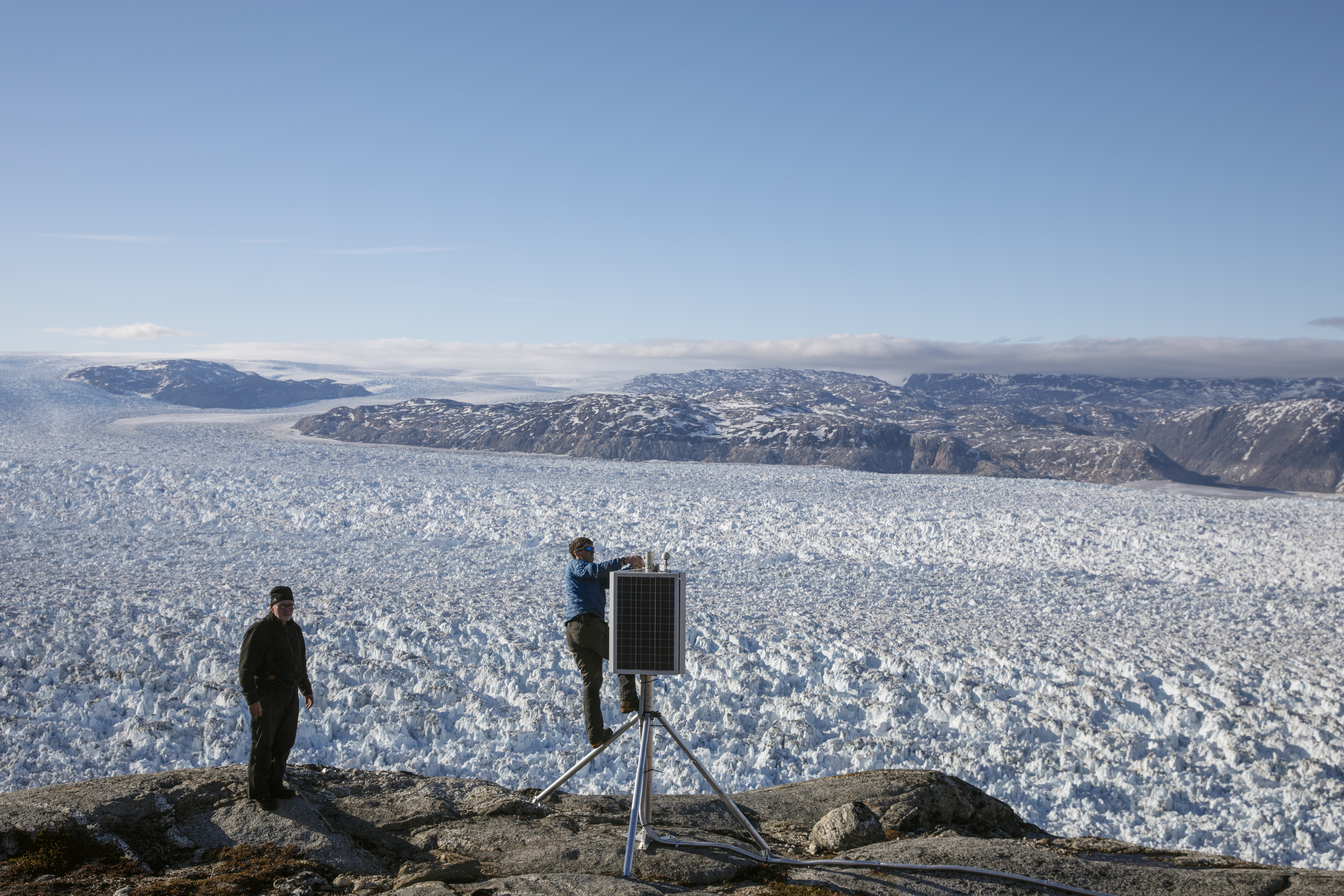Climate change is pushing the Arctic into unprecedented — and unpredictable — territory, scientists warn
NOAA's 2018 Arctic Report Card highlights several negative trends, including sea ice loss, caribou declines and harmful algal blooms.

Changes in the Arctic are pushing the region into uncharted territory, according to a new report from the National Oceanic and Atmospheric Administration.
Every year since 2006, NOAA has released its peer-reviewed Arctic Report Card, outlining the challenges facing the region in a rapidly changing environment.
This year’s report card, which included 14 essays written by 81 scientists from 12 countries, found that 2018 was the second-warmest year on record for the Arctic, and that warmth, coupled with the continued decline of sea ice, is driving changes in the region and beyond.
“Arctic observations are necessary to understand and predict how these changes will affect Americans and those across the globe,” said Emily Osborne, program manager at NOAA’s Arctic Research Program.
Yet, the changes are so rapid and unprecedented, she says, it’s difficult to predict what will happen next.
“There are these emerging changes that we just can’t even anticipate because the system has never been like this in the past,” she told ArcticToday.
For example, the Bering Sea saw major changes in water temperature and ecosystem changes. “And we’re still seeing changes that are happening from the fallout of just not having any ice in the Bering,” Osborne said. Those effects will continue to build over the next year and beyond, she said.
Rising temperatures
Temperatures in the Arctic continue to rise at double the rate of the rest of the world. This year will be the second-hottest on record since 1900, behind only 2016. In fact, every year since 2014 has been warmer than all prior records.
Temperatures were especially high in Alaska’s high north and Siberia’s far east, while unusual warmth also stretched across the Arctic Ocean, extending past Greenland.
The report is quick to point out that the climate change driving these temperature increases is caused by humans.
Diminishing sea ice
Sea ice is now younger, thinner, and less extensive than it was in the past.
Since satellite records began in 1979, the 12 worst seasons for sea ice extent have all come in the past 12 years.
And it’s not just sea ice extent that is declining. The ice is also also getting younger on average. Multi-year ice has declined by 95 percent since 1985 — from 16 percent to less than 1 percent.
This older ice is more resilient to ice melt and harsh storms, so its disappearance could set up a feedback loop that leads to even faster melting.
Coastal landfast ice has also seen dramatic changes. This form of ice change poses one of the biggest threats to humans in the region, who often must navigate this ice to hunt and travel. And landfast ice forms a buffer against land erosion — which is also increasing.
Sea surface temperatures in the Bering and Chukchi seas were 20 degrees Fahrenheit above long-term averages, the researchers said. Meanwhile, temperatures in Beaufort Sea were lower than usual due to changing dynamics in ice and water.
These changes are expected to have massive but difficult-to-predict effects on marine life and the people who depend on it, according to scientists. The changes are also affecting the jet stream, according to the NOAA report, which results in more erratic and extreme weather outside the Arctic.
Declining caribou
Although climate change is, in the short term at least, making more vegetation grow in many parts of the Arctic, caribou and reindeer populations continue to decline — by more than 50 percent in the past 20 years, the researchers say.
More frequent droughts and an increase in insects have also contributed to their decline.
Five herds in the Alaska-Canada region are experiencing particularly drastic declines — to the extent that they may not be able to recover.
Only one of more than 20 monitored herds — the Porcupine herd in Alaska and Canada — has a confirmed population that is close to its historic high. That herd uses the coastal plain of the Arctic National Wildlife Refuge for calving, and the researchers raised questions about how oil exploration in the region.
“If it does occur, it would be absolutely devastating,” said Howard Epstein, a professor at the University of Virginia.
Seismic testing makes changes to the tundra that persist long after the exploration concludes, he said.
Intensifying algal blooms and pollution
The Bering Sea, in turn, saw much higher levels of ocean productivity — including a red tide of toxic algae.
In the past four decades, for instance, paralytic shellfish poisoning from harmful algal blooms has become seven times more common in Alaska, where cases of the poisoning are among the highest in the world.
And microplastics are a growing concern for the health of marine animals and people in the Arctic, the researchers said.
Moving forward
In addition to painting a dismal picture of change in the Arctic, NOAA also highlighted technological innovations that are helping researchers in circumpolar regions, from unmanned data collection technologies to satellites orbiting the Arctic.
But perhaps even with extensive data documenting the changes, the researchers said, it will be difficult to predict how such widespread and massive changes will affect the region.
“Changes are occurring,” said Rear Admiral Tim Gallaudet, the acting administrator of NOAA. “What we need to do is adapt to the changes by better understanding and improving our predictions.”
The authors of the report called for more long-term monitoring programs to measure the extent and rapidity of changes.
Understanding the changes — and responding to them — will be crucial both for those who call the Arctic home and for the rest of the world, the researchers said.
Yereth Rosen contributed additional reporting.